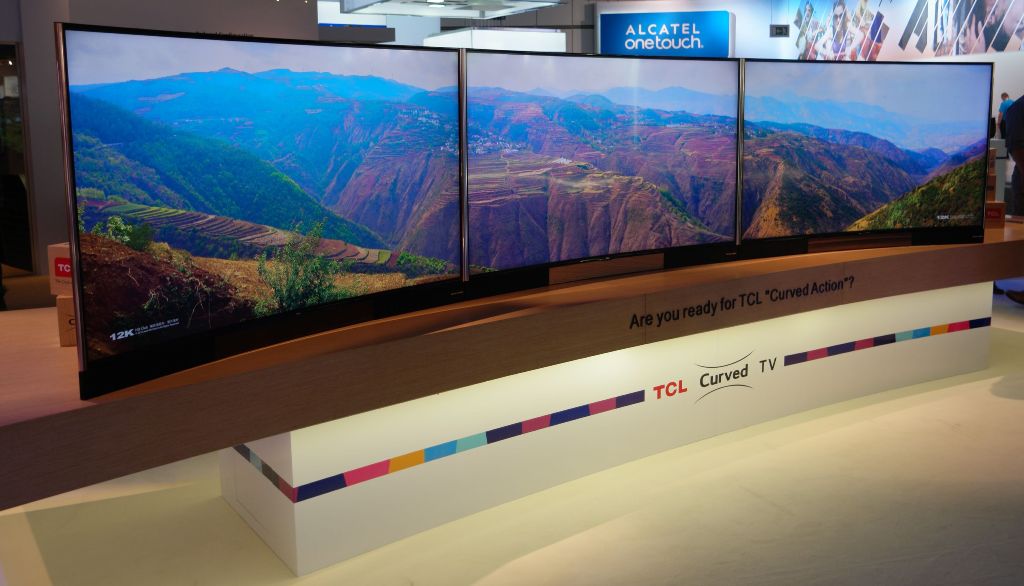OLED TVs vs. 4K LED TVs: Which To Choose?
So you've finally been able to decide between an LCD or a plasma TV. Congratulations! There's bad news, though: plasma TVs are so 2013 that they've fallen by the wayside. The new choice is between two very different technologies: OLED and 4K. Here's a look at each of them, and how to choose between them.
First, though, an important clarification. People often think that "LED" displays are something brand-new, but in reality they're just a better form of the LCD displays which have been around for years. LEDs are simply LCDs using a better type of backlight, from light-emitting diodes instead of florescent sources. So if you're wondering why LCDs don't factor into this discussion, they do - sort of. They're now just called LEDs.
OLED TV
OLED stands for "organic light-emitting diode," and it is a new, ground-breaking technology. OLED puts electricity directly through special organic materials which glow either red, green or blue (the three colors that make up all the colors you see on a monitor), while previous technologies had to use bulkier filters and crystals to either block or show light in order to display the colors.

What that means is that OLED displays are much thinner and lighter than any you've ever seen, and show much more vibrant, true colors than standard LEDs (or plasma screens for that matter). They have an incredible ability to display proper contrast because blacks are able to disappear completely and whites "pop" off the screen. They're also more energy efficient, by their very nature.
4K TV
4K TV, as you probably know, has been the most-hyped advance in television technology over the last few years. 4K shouldn't be confused with 3D, because it has nothing to do with images appearing to "stick out" from the screen. 4K refers to the number of horizontal display pixels on the screen; it provides about twice the resolution of the now-common 1080p TV display (4096 by 2160 pixels instead of 1920 by 1080 pixels). When watching very large 4K monitors, or when sitting very close to smaller ones, the level of detail on a 4K picture is startlingly better than on the televisions you're accustomed to. You're basically unable to see the individual pixels on the screen no matter how close you get. That's why the picture quality on a 4K TV is simply stunning (and while 4K and 3D are different technologies, some 4Ks come fairly close to producing a passable 3D experience on a normal screen because of better image depth).
How to Choose Between OLED and 4K

Here's a comparison between the two, so you can judge which of these exciting options is best for you.
- Picture Quality: The resolution argument certainly favors 4K TV, since true 4K is close to the experience of watching a movie in a cinema. However, because 4K is still based on older LED technology, there are still some issues such as brightness differing between the middle and sides of the screen, and"distortion" when viewing the display from a sharp angle. The contrast issue clearly favors OLED because of the vibrant colors and"blackest blacks" it can deliver. It's largely a matter of personal preference - but a simple way to look at the comparison is that for large screens (50"-100"), 4K produces what most feel is a sharper, better-looking picture, while the picture on a smaller screen (55" or smaller) will look better with OLED where the major advantages of 4K don't come into play. Most experts consider it a toss-up on a 55-inch screen.
- Source Material: Relatively little material is currently available in native 4K resolution, but the "upscaling" of 1080p material done by most good 4K TVs usually delivers a terrific-looking picture. And more and more 4K source material is being produced every month, so the current shortage of 4K material shouldn't put you off. However, not all projectors or players are compatible with 4K (because of the cables they use) so be sure to check out compatibility before taking the plunge.
- Obviously, all source material is compatible with OLED.
- Screen Depth and Weight: OLED by a mile; in fact, some OLED screens are the same depth as a pencil.
Energy Efficiency: There's no question, OLED wins here as well. - Reliability: This one is hard to judge because OLED is so new; by default, you would have to give this one to 4K because the technology that it's based on (LED) is tested and known to perform over the long-term.
- Price: There's temporarily a small advantage for 4K here, since it's been on the market longer. For example, a quality 55-inch OLED will set you back between $2000 and $2500, while a quality 4K around the same size will cost about $500-$700 less. The difference should narrow, though, once OLEDs have been out for a while
The best solution? 55-inch 4K OLEDs are starting to hit the market, and while they're quite pricey (at least a few thousand dollars more than standard OLEDs), they might be the best choice of all - once prices come down a bit



